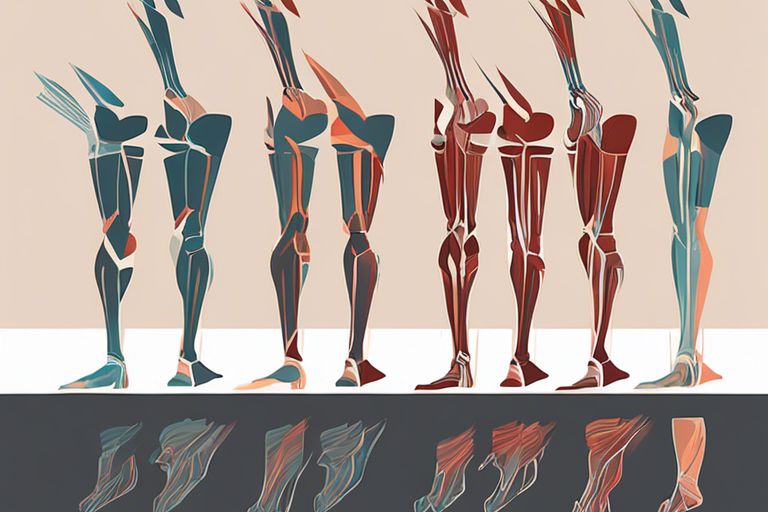Are you struggling with chronic pain and looking for natural ways to manage it? Walking may just be the solution you’ve been searching for. As one of the most accessible forms of physical activity, walking can significantly reduce pain and improve function in those suffering from chronic pain conditions. Research has shown that regular walking can decrease inflammation, increase endorphins, and strengthen muscles, all of which contribute to alleviating chronic pain. Additionally, regular walking can improve your overall physical and mental well-being and lower your risk of developing other health issues associated with a sedentary lifestyle. In this blog post, we will delve into the science behind walking and how it can be an effective tool in managing chronic pain. Let’s explore the benefits of walking and how you can incorporate it into your daily routine to find relief from chronic pain.
The Science Behind Walking and Pain Relief
To understand how walking can help in managing chronic pain, it is important to look at the science behind this form of exercise and its impact on your body. Walking has been shown to have both physiological and psychological effects that can contribute to pain relief and overall well-being.
Physiological Effects of Walking on Chronic Pain
When you engage in regular walking, your body releases endorphins, which are natural painkillers. These endorphins act on the same receptors in your brain as opioids, reducing your perception of pain. Furthermore, walking helps to improve circulation, delivering more oxygen and nutrients to your muscles and joints. This can reduce inflammation and help to alleviate pain in the affected areas. Additionally, walking can help to strengthen the muscles that support your joints, providing better stability and reducing the likelihood of further pain or injury.
Psychological Benefits of Regular Exercise
Beyond the physiological effects, walking also offers psychological benefits that can aid in pain management. Regular exercise, including walking, has been linked to a reduction in stress and anxiety, both of which can exacerbate chronic pain. When you engage in physical activity, your body releases serotonin and dopamine, neurotransmitters that can improve your mood and help you manage pain more effectively. Furthermore, the sense of accomplishment and empowerment that comes with regular exercise can help you feel more in control of your pain and overall health.

Implementing Walking into Your Routine
The key to managing chronic pain through walking is to make it a regular part of your routine. The more consistent you are with your walking regimen, the more benefits you will experience. In this chapter, we will discuss how you can implement walking into your daily schedule in a sustainable and achievable way.
Creating a Sustainable Walking Plan
The first step in creating a sustainable walking plan is to assess your current level of physical activity. Start by incorporating short walks into your daily routine, gradually increasing the duration and intensity as your endurance improves. Additionally, consider breaking up your walks into shorter sessions throughout the day to avoid overexertion. Find a pace that is comfortable for you, and don’t push yourself too hard, especially in the beginning. It’s important to listen to your body and not overdo it, as this could lead to exacerbating your chronic pain. By gradually building up your walking routine, you can ensure that it is sustainable in the long term.
Setting Achievable Goals
When incorporating walking into your routine, it’s crucial to set achievable goals that align with your physical capabilities and pain levels. Start by setting small, manageable goals for each walk, such as increasing your distance or speed by a modest amount. It’s important to be realistic and not set yourself up for disappointment or injury by aiming for too much too soon. By setting achievable goals, you will be able to track your progress and feel a sense of accomplishment, which can be incredibly motivating. Remember, the focus is on gradual improvement and consistency, rather than pushing yourself to the limit.
By creating a sustainable walking plan and setting achievable goals, you can effectively incorporate walking into your routine to help manage your chronic pain. It’s important to listen to your body, start small, and gradually increase the intensity of your walks. Remember, the goal is to improve your overall well-being, not push yourself to the point of further discomfort.
Additional Strategies for Managing Chronic Pain
For those dealing with chronic pain, there are a number of additional strategies that can be incorporated into your routine to help manage your symptoms effectively. In addition to walking, there are complementary activities and therapies, as well as the importance of a holistic approach, that can contribute to reducing your chronic pain.
Complementary Activities and Therapies
In addition to walking, incorporating complementary activities and therapies into your routine can provide added relief from chronic pain. Activities such as yoga, tai chi, or pilates can help improve flexibility, strength, and relaxation. Therapies such as acupuncture, massage, or chiropractic care can also provide relief from chronic pain by targeting specific areas of discomfort or tension. These complementary approaches can enhance the benefits of walking and contribute to an overall reduction in chronic pain symptoms.
Importance of a Holistic Approach
A holistic approach to managing chronic pain can be highly beneficial. This approach involves considering not only the physical aspects of pain, but also the mental and emotional impact it has on your overall well-being. It’s important to address any stress, anxiety, or depression that may accompany chronic pain, as these factors can exacerbate your symptoms. By incorporating relaxation techniques, mindfulness practices, and seeking support from mental health professionals, you can address the holistic impact of chronic pain and improve your overall quality of life.
By exploring complementary activities and therapies, as well as adopting a holistic approach, you can enhance the benefits of walking in managing your chronic pain. Remember, it’s essential to consult with your healthcare provider before incorporating any new strategies into your pain management routine to ensure they are appropriate for your individual needs.
Can walking help in managing chronic pain?
Summing up, walking can be a beneficial addition to your chronic pain management plan. It can help improve your overall fitness, increase your mobility, and reduce stress and anxiety, all of which can contribute to managing chronic pain. By incorporating walking into your daily routine, you may experience a reduction in pain and an improvement in your overall quality of life. Remember to consult with your healthcare provider before starting any new exercise program to ensure it is safe and appropriate for your individual condition. With their guidance, you can start reaping the benefits of walking as a tool in managing chronic pain.




